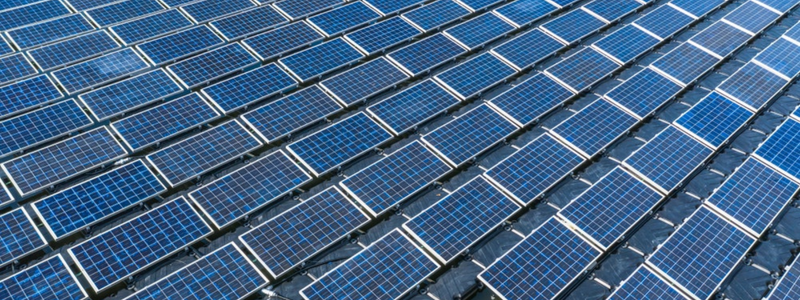Solential Energy, an Indiana based renewable energy company that specializes in commercial solar energy and microgrid systems, said that it is planning the installation of floating PV, or floatovoltaics, to water and wastewater treatment plants across the Midwest.
Solential will secure the requisite floating PV racking systems from French company Ciel & Terre, which has been developing the solution for more than a decade Its hardware is used in more than 240 floatovoltaic systems around the world. Ciel & Terre will supply the racking systems and its patented Hydrelio technology, the blow-molded high-density polyethylene plastic on which the racking and panel sits.
Solential said it is in final negotiations with a major Midwestern city to install the region’s first floatovoltaic solar system. Floating PV has historically been a resource absent from the Midwest; Ciel & Terre’s existing U.S. floatovoltaic portfolio is largely installed in California and Florida.
In August, BlueWave Solar formed a joint venture with Laketricity, a unit of Ciel & Terre, to develop floating solar projects in Massachusetts, with reported intent to expand throughout the Northeast.
California is currently home to the largest claimed floating solar project in the country, the 4.8 MW Healdsburg Floating Solar Project, installed on ponds at the City of Healdsburg’s wastewater treatment plant. The project, co-developed by White Pine Renewables and Noria Energy, will cover around 8% of the city’s total energy demand, moving it toward a goal of 60% renewable energy usage before 2030.
The previous claimant to the title of largest floatovoltaic project in the U.S. was the 4.4. MW floating array in Sayreville, New Jersey, installed by Ciel & Terre USA. That project, just outside of New York City, is also sited on a pond at a water treatment facility. It offsets the power use at the facility and a handful of other government facilities.
In April, Pine Gate Renewables said it would site 9 MW of solar-plus-storage over cranberry bogs in southeast Massachusetts. Solar Carver 1 would be built on a 70-acre site and generate 5 MW of solar energy, accompanied by 30 MWh of battery storage. Solar Carver 3 would have a capacity of 2 MW and include a 12 MWh battery storage system across a 35-acre site.
Floating solar has been pegged by the U.S. Department of Energy’s National Renewable Energy Laboratories (NREL) as a “rapidly emerging technology.” A report outlined the technology’s potential to produce just under 10% of current electricity generation.
The technology can offer higher energy production due to the cooling effects of water and wind. Even so, the floating solar has not reached widespread adoption, due in part to higher installation costs than traditional PV plants.
However, according to Stetson Tchividjian, director of business development at D3Energy, a floating PV developer, this could change as floating solar approaches price parity with land-based PV. Tchividjian also points out that floating solar has lower operation and management costs, and no land costs.
This content is protected by copyright and may not be reused. If you want to cooperate with us and would like to reuse some of our content, please contact: editors@pv-magazine.com.









By submitting this form you agree to pv magazine using your data for the purposes of publishing your comment.
Your personal data will only be disclosed or otherwise transmitted to third parties for the purposes of spam filtering or if this is necessary for technical maintenance of the website. Any other transfer to third parties will not take place unless this is justified on the basis of applicable data protection regulations or if pv magazine is legally obliged to do so.
You may revoke this consent at any time with effect for the future, in which case your personal data will be deleted immediately. Otherwise, your data will be deleted if pv magazine has processed your request or the purpose of data storage is fulfilled.
Further information on data privacy can be found in our Data Protection Policy.